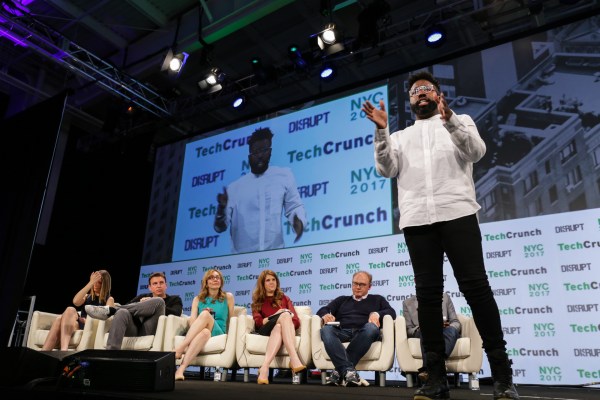A startup called Lisnr wants to replace NFC and QR codes with a new technology that sends data over audio — a communication protocol it’s calling Smart Tone. The technology it’s invented can be used across a number of applications, including point-of-sale transactions, ticketing and authentication, offline messaging, device to device connectivity and more.
The idea for Lisnr comes from co-founder and CEO Rodney Williams. Though not an engineer himself, his background at Lockheed Martin, Procter & Gamble and elsewhere exposed him to technology and taught him the value of patents and IP. He had an idea about it should work, versus how it’s working today, and saw the opportunity to make something better.
“We’ve created all these advanced technologies and experiences on top of these old protocols,” Williams explains. “The frustration was really that today we create products and services around the limitations of technology…I felt like if we could create a better connector, we could extract the best consumer experience.”
The startup was founded in Cincinnati in 2012 by Williams, along with serial entrepreneur Chris Ostoich and software architect Josh Glick — the latter who met Williams after his Startup Bus pitch. However, it wasn’t until 2014 that the company invented its technology — something Williams credits to one of the company’s first hires, developer William Knauer.
In addition, Lisnr now has an expert in data over audio, Dr. Andrew Singer, serving as its technical advisor.
The technology itself uses speaker broadcasts to send out the Smart Tone to a device with a microphone, which then demodulates the Smart Tone and its content. That content could be data like a message, an image, a URL or anything else. Often, the receiving device will also send a Smart Tone back to the original broadcasting device, too, enabling two-way communications.
The Smart Tone itself has three parts — a preamble, header and payload. The preamble is what tells the receiving device that a Smart Tone is present, ready for decoding.
Lisnr uses the audio frequency range of ~18.7 kHz to 19.2 kHz for its communications, which is inaudible to 98 percent of people. (For those who can hear it, the audio sounds like white noise).
To decode the data in the waveform, the audio is run through a program called hflat. Lisnr doesn’t make server calls — the data is decoded locally.
The idea to transfer data via audio isn’t brand new — Google Nearby uses this for sharing data between devices, as a rival to Apple’s AirDrop. Another company called Chirp is also doing data over audio.
However, Williams claims that Lisnr has five to 10 times the throughput of its next nearest competitor. For example, Google Nearby is 66 bits per second, while Lisnr has commercially deployed 300 bps. And it has some beta customers doing 1,000 to 3,000 bps.
[gallery ids="1491644,1491645,1491643,1491642,1491641"]
But while data-over-audio technologies have the benefit of not needing an internet connection to work, they also have a limited range as the microphone has to be able to “hear” the speaker being used to send the data. Lisnr’s Smart Tone, then, is more of a proximity protocol to replace things like Bluetooth, NFC or QR code scanning.
This has a lot of practical implementations, though. During its beta, Lisnr has at any one time anywhere from 100 to 200 companies trialing its technology. These have included those across a range of industries, like ticketing companies, airlines, transportation companies, theaters, retailers, banks, mobile wallet providers, real estate companies, security firms and more.
Jaguar/Land Rover has now adopted the protocol to personalize the car to your settings by identifying you by your smartphone. Lisnr has also just landed the world’s largest ticketing company as its customer, which has already gone live in a few locations.
In ticketing applications, instead of scanning QR codes on event goers’ phones at the door, the company could deploy the technology via its mobile app, or even an email or link.
Other customers who can be mentioned include MovieTickets.com, chipset company DSPG and many of Intel’s partners. After years of testing, Lisnr is now on pace to be installed on 30 million devices, says Williams.
Businesses pay Lisnr on a per-device, per-year model, along with a small fee (pennies) per data transmission or per authentication. They can use the technology via SDK or API.
Today at Disrupt, the team is launching Smart Tone for commercial use.
Lisnr has raised $14 million to date from Intel Capital, Jump Capital, Rubicon VC, Progress Ventures, Serra Ventures, Mercury Fund, R/GA, CourtsideVC, TechStars, CincyTech and others.
